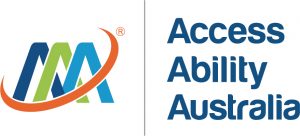Social Stories
A Social Story is a tool used to help individuals of any age group, particularly those with autism or other developmental conditions, understand social situations and expectations. It uses simple, clear language and visuals to describe what will happen in a specific situation, the expected behaviours, and the feelings or responses involved.
Social Stories can help reduce anxiety, improve social skills, and enhance communication by providing a structured and predictable way to navigate different environments and interactions. They are often used in community and educational settings, therapy and at home to support individuals in understanding and participating in various activities and social contexts. Social Stories are also a wonderful tool to praise successful completion of an accomplishment.
Access Ability Australia collaborates with our AAA Network members to create customised Social Stories tailored to their venues and events. We offer two types of stories: a standard Social Story or an enhanced version with accessibility features and a customised sensory guide. These stories meet best practice guidelines by adhering to established writing processes and defining criteria, ensuring they are clear, informative and effective in preparing individuals for social interactions.
As at 31 March 2018, 29 per cent of NDIS participants with an approved plan had a primary disability of autism spectrum disorder (ASD), making it the largest primary disability category for the NDIS [1].
In 2018 there were 205,200 Australians with autism, a 25.1% increase from the 164,000 with the condition in 2015 [2].
According to Tony Attwood, a clinical psychologist known worldwide for his knowledge of Asperger’s Syndrome “Social Stories are written with the intention of providing information and tuition on what people in a given situation are doing, thinking or feeling, the sequence of events, the identification of significant social cues and their meaning, and the script of what to do or say; in other words, the what, when, who and why aspects of social situations”.
[1] https://data.ndis.gov.au/reports-and-analyses/outcomes-participants-autism-spectrum-disorder#:~:text=As%20at%2031%20March%202018,disability%20category%20for%20the%20NDIS.
[2] https://www.abs.gov.au/AUSSTATS/abs@.nsf/Lookup/4430.0Main+Features102018
